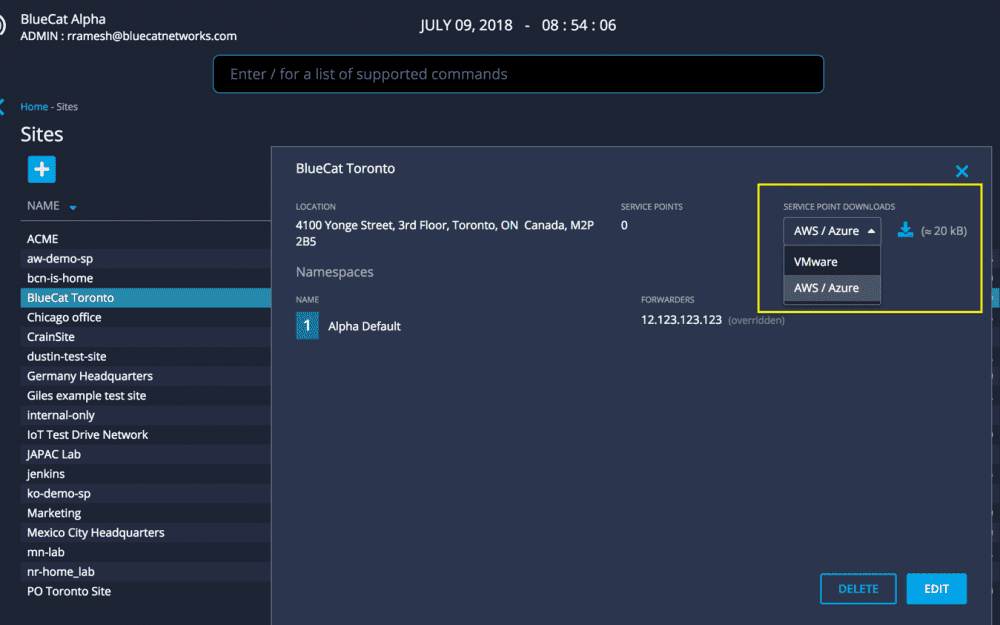DNS Edge July Release Enables Hybrid Cloud and More

BlueCat continues its commitment and support of cloud-based infrastructures by extending BlueCat DNS Edge™ visibility, control, and detection capabilities to commercial cloud environments.
The July 2018 release of Edge, among additional updates, extends service points to be deployed in Amazon Web Services (AWS) or Microsoft Azure.
Leading benefits Edge provides within AWS and Azure include:
- Enabling cloud app developers faced with data stored in hybrid environments
- Easing data and service migration to the cloud
- Reducing attack surface and misuse of data and services
As organizations adapt to cloud services and capabilities, cloud app developers are running into hurdles trying to work within hybrid environments. For various reasons, some IT processes, computing power, and data will need to reside within on-premises data centers while others are moved to the cloud. Many leading organizations insist their proprietary applications and top-secret data remain in a data center they own or in other central services that are not tied to cloud environments. Other data can live within the cloud. Yet building applications in AWS or Azure allows developers to focus on building applications, not setting up servers or services. Instead of spending time on OS patching, network configuration, and more, developers can focus on producing the content or services they want to offer to customers. With Edge service points in AWS or Azure, our customers can control the DNS resolution path to hybrid on-premises and cloud sources in a prioritized order.

Data and service migration to the cloud also becomes easier. With control and flexibility over how DNS queries are resolved, networking teams can avoid burdensome methods like complicated conditional DNS forwarding rules that require careful management and upkeep. Edge changes the rules to ease the process by simply setting up multiple namespaces, each for the authoritative DNS for where zones are being migrated to in the cloud and from the data center. Edge allows for teams to prioritize the order for each namespace to be resolved to. Should one not resolve as expected, the next will be attempted until an answer is received. No longer will services be interrupted by configuration errors during migration. Edge makes it simple and easy.

Finally, because Edge provides visibility and control of the DNS data itself, it can help keep data safe from attacks and misuse. Simply set policies allowing access to data and services to applications that require access to do their job.
The July 2018 release of BlueCat DNS Edge is now available.




